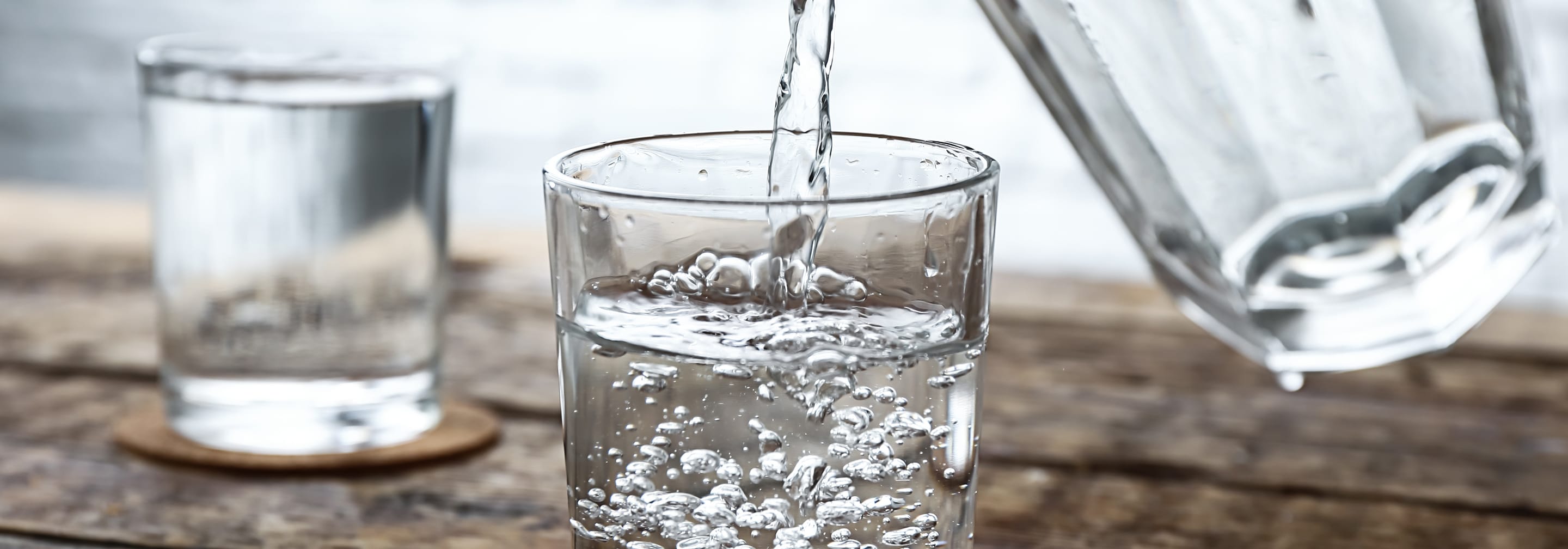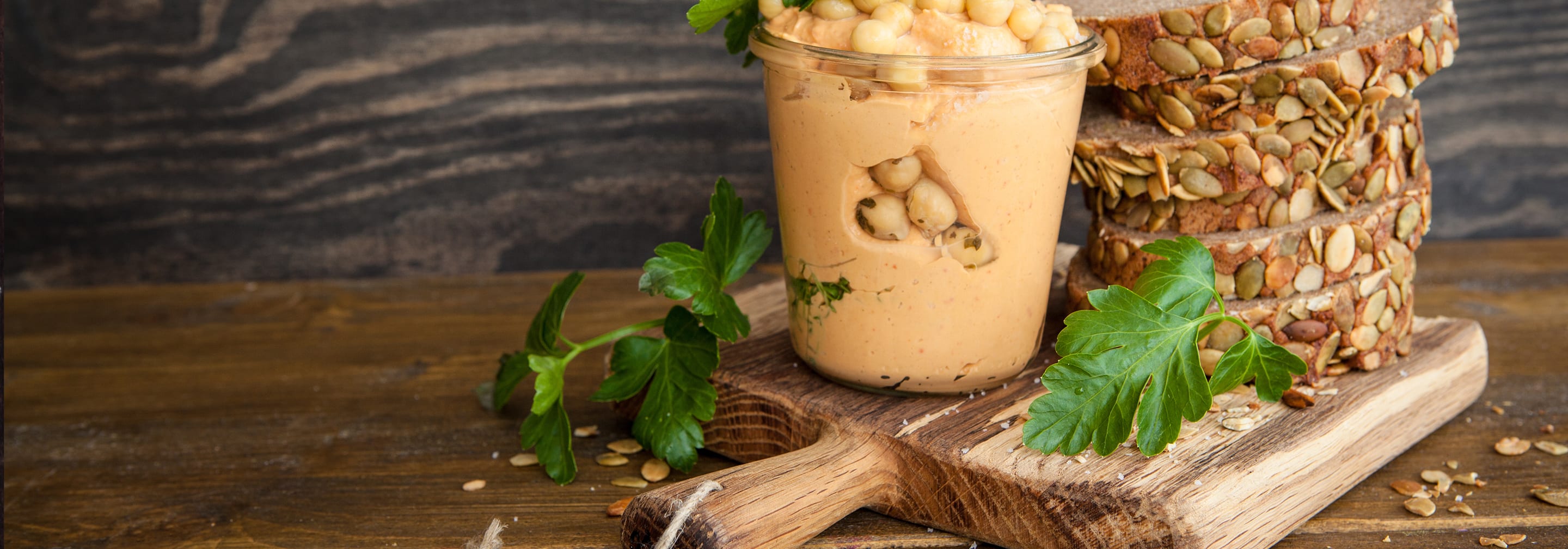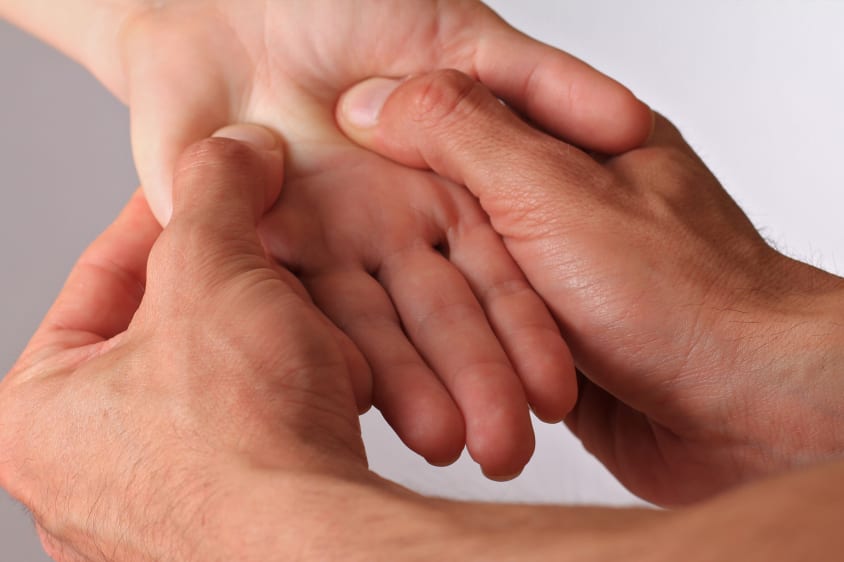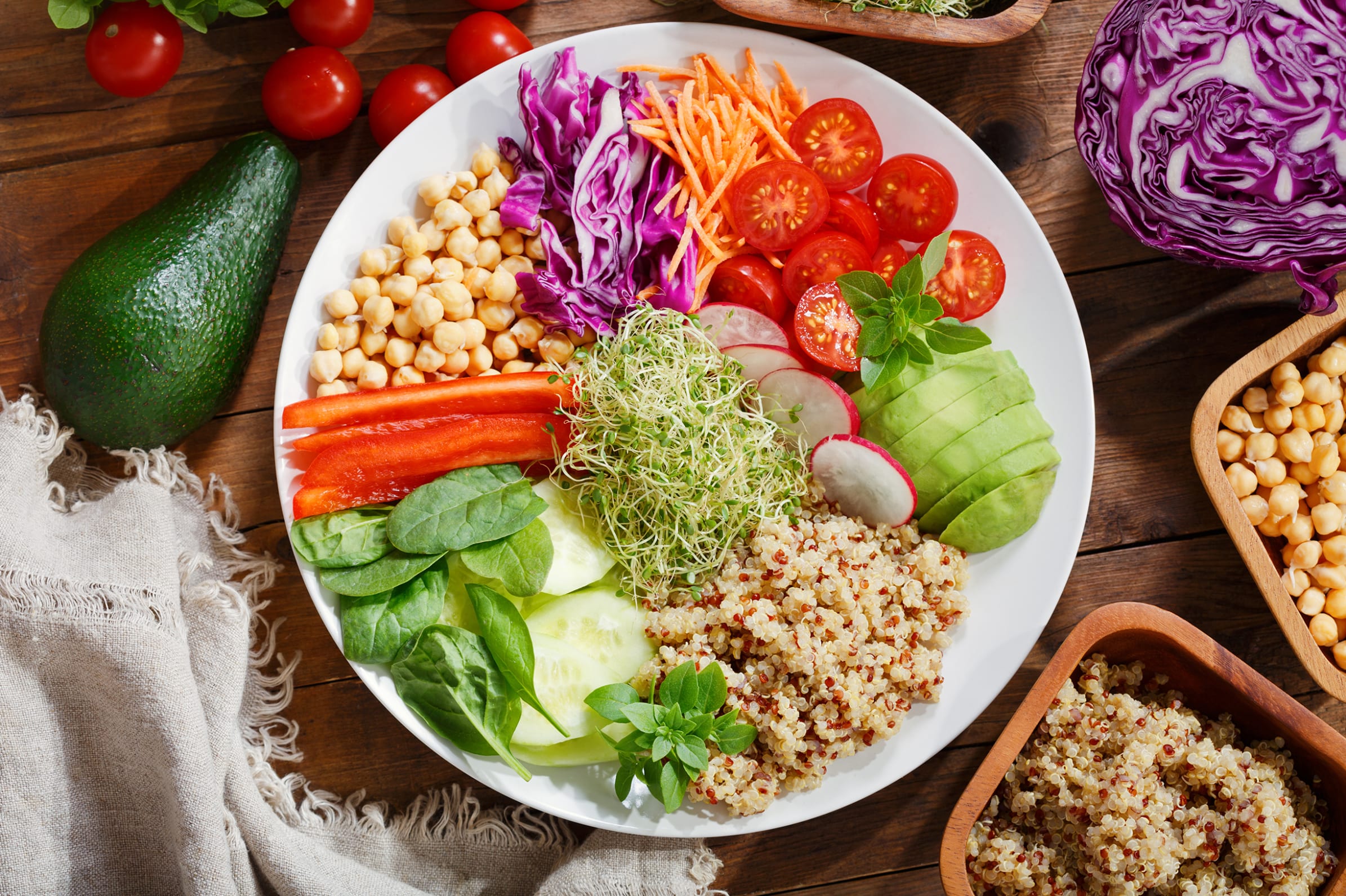
Fascia nutrition: Eating right for the fascia.

Combat glued fascia through diet.
You're probably already aware that you can help your connective tissue by using the various BLACKROLL® tools. You can strengthen connective tissue through myofascial self-massage, loosen glued fascia, relieve tight and painful structures, improve flexibility and reduce tension – to name just a few wonderful effects. Fascia care can be provided both externally and internally. With the right fascia nutrition. Eating right for the fascia also means avoiding glued fascia through nutrition.
Problems with the musculoskeletal system occur more frequently than any other chronic illness. This sometimes causes considerable pain and diminishes our quality of life as a result. One effect of inflammatory reactions in the body is that toxic and cell-dissolving substances are released which cause tissue damage in the fascia. Fortunately, nutrition allows us to reduce inflammations and significantly improve the function of the skeleton, muscles and fascia tissue.
Basic nutritional building blocks that not only benefit the connective tissue:
- Fluids
- Macronutrients
- Carbohydrate (sugar)
- Protein
- Lipids (fats)
- Micronutrients
- Vitamins
- Bulk elements
- Trace elements
- Bioactive substances
- Secondary plant substances
- Fibre
- Fermented foods
But don’t worry: You don’t need to consume all of these essential nutrients in the right ratio at every single meal for good connective tissue nutrition. The most important thing is to enjoy your food and personal compatibility with what you eat. Everything else requires a little adjustment and willingness to achieve a balanced and primarily plant-based diet. In doing so, virtually nothing can get in the way of a healthy, vital body and well-functioning, durable fascia.

Fluids – an important component of fascia nutrition
Everything relies on the right balance of fluids. Adults should consume around 1.5 litres of fluid in the form of water and unsweetened herbal or fruit tea. Anyone looking to increase their micronutrient supply at the same time: Mineral water, which contains a high proportion of calcium (>150 mg/l), magnesium (>50 mg/l), potassium (>25 mg/l) and sodium (>200 mg/l), can contribute to a balanced supply of essential nutrients. Note: People with high blood pressure should opt for low-sodium mineral water (<20 mg/l).
In adults, the entire body is made up of around 60% water. As we age, our body loses water which, among other things, keeps our musculoskeletal system and connective tissue, the fascia, soft and supple. The water content in muscle and fascia tissue can be as high as 75%. As we get older, the body's overall water content decreases to around 50%. Our body redistributes its water reserves to our disadvantage. The amount of water in the skin (wrinkles), in the central nervous system (protects the brain and spinal cord) and subcutaneous fat tissue reduces and more water is stored in the muscles and fat.
So, what does this have to do with our fascia?
Fascia have several tasks, which include supplying tissue with nutrients. This takes place through fluid transport. Nutrients and oxygen can only be optimally transported to the specific tissue if enough fluids are available. The same applies to the removal of waste products, which can only function at its best if there is an adequate supply of fluid. When metabolic products accumulate as a result of insufficient fluids, this increases the risk of microinflammation and adhesion in the connective tissue. This can result in diffuse pain and hotspots that affect our flexibility and wellbeing. In general, the quantity of waste products in the tissue increases after exercise. A fascia massage using the BLACKROLL®, the so-called self-myofascial release (SMR), after training helps the body transport waste products, ideally with sufficient fluid in the tissue. During sport, fluids are secreted as sweat and are then also pushed out of the tissue through myofascial self-release exercises. Both factors mean that the “lost” fluid has to be replaced, or refilled, as otherwise the lubricating fascial layers can bond together (crosslinks). The collagen fibres, from which our fascia are mostly comprised, remain elastic and lubricated by ensuring sufficient fluid in the connective tissue.
See for yourself:
Grip the skin on the back of your hand using the two fingers of your other hand and pull up the skin. Let the fold of skin go again. If the fold lines disappear in two to three seconds, you are sufficiently hydrated. If they remain visible for longer, that’s a sign that you need to increase your fluid intake.

Macronutrients for connective tissue nutrition
Our body needs energy suppliers to produce energy - known as macronutrients. These comprise carbohydrate (sugar), protein and lipids (fats).
Carbohydrate
This provides our body with important structural components that our fascial tissue needs to retain water and ensure lubrication of the fascial layers. Together with protein, carbohydrate breaks down collagen and reduces inflammation in the fascia.
They are divided into:
monosaccharides (consisting of one molecule),
disaccharides (consisting of two molecules),
polysaccharides (consisting of three to ten molecules),
and oligosaccharides (more than ten molecules).
The largest proportion of sugar that we consume through diet is normally starch, an oligosaccharide. It is found in potatoes, pulses (e.g. beans, peas, lentils, chickpeas) and grains (e.g. wheat, barley, oats, spelt and rye). The higher the number of sugar molecules, the longer it takes to break down in our digestive tract, and so the slower our blood sugar level increases and the longer this level remains constant and make us feel full. Isolated monosaccharides, found in sweetened soft drinks such as lemonade, do the opposite. After consumption, our blood sugar level rises rapidly (insulin spike) and then falls just as quickly. This puts unnecessary strain on our body.
Our diet should therefore focus on starchy foods. Examples of this include bread, pasta and bananas. The proportion of carbohydrates in our total daily energy consumption should be at least 25%, or ideally >50%. Carbohydrates also help to store energy. The body fills its energy reserves which are then available to provide energy during physical activity.
Protein
This has many functions within the body. In addition to its function as an energy source alongside sugar and fat, protein helps the body to build tissue. Protein is probably most known for this among certain athletes who consume protein in every form to help build muscle. Collagen accounts for around a third of our body's protein, from which our connective tissue is formed. The German Nutrition Society recommends that healthy adults consume 0.8 g of protein per kg of body weight. A balanced, largely plant-based diet can easily fulfil the daily protein requirement.
Good plant-based sources of protein include pulses, grains, gluten-free pseudocereals (buckwheat, quinoa and amaranth), nuts, seeds, shoots, vegetables and nutritional yeast. Cleverly combined food groups increase the intake of available protein in the diet, e.g. such as combining wholegrain products and pulses. A simple example would be wholegrain bread with hummus. Protein should account for around 10% of our overall daily calorie intake.
Lipids
These are separated based on their length and saturation. Saturation describes their chemical structure. You've probably heard of (un)saturated fatty acids or long and short-chain fatty acids. In short: try to go for unsaturated fatty acids. Saturated fatty acids, on the other hand, should form a much smaller part of your fat consumption. What’s more, the more liquid a fat is, the better it is for your body. Where possible, avoid fat that has been hardened (e.g. butter). Dietary fat also has the important task of supplying the body with fat-soluble vitamins (A, D, E and K). However, excessive consumption can quickly lead to storage of the unexpended energy. Fats are the most energy-rich macronutrients and, with an energy content of 9.3 kcal/g, are more than twice as rich in energy as carbohydrate and protein. The total amount of fat in our overall daily calorie intake should not exceed 30%.
Fatty acids in general are responsible for inflammatory processes in our body, particularly in fascia tissue. We differentiate here between fatty acids which have an anti-inflammatory effect (Omega-3 fatty acids) and fatty acids with inflammatory effects (Omega-6 fatty acids). It therefore makes sense to consume sufficient amounts of Omega-3 if aiming for an anti-inflammatory diet, which generally has a positive effect on our connective tissue and actively helps to prevent fascial adhesion.
These are primarily found in linseed, walnuts and chia seeds. In addition to animal products such as meat, fish and eggs, we consume Omega-6 fatty acids which promote inflammatory processes, known as proinflammatory. However, Omega-6 fatty acids are also found in plant-based foods such as sunflower seeds and sesame seeds. You should therefore aim for a balance of anti-inflammatory and inflammatory fatty acids. The optimum ratio is around 3:1 or 5:1 (Omega 6 : Omega 3). The average diet in industrialised nations is characterised by a ratio of the two, but with a greater proportion of proinflammatory fatty acids. When regenerating and repairing microlesions after a workout, our body benefits from an adequate supply of Omega-3 fatty acids, and from a balanced ratio of Omega-3 and Omega-6 fatty acids. If you are a highly active athlete with a greater requirement, pregnant or breastfeeding, you can also supplement your diet with microalgae oil.
Olive oil instead of painkillers?
Olive oil, which is an unsaturated fatty acid, has the ability to reduce inflammation and sensitivity to pain, not only in the connective tissue. 50 ml of olive oil consumed orally has the same pain-relieving benefits as 200 mg of Ibuprofen, which typically corresponds to half a tablet.

Micronutrients - an additional important part of fascia nutrition
Micronutrients, which include vitamins and minerals, are essential nutrients that are responsible for keeping our bodily and metabolic functions in check. Note: “The more the better” does not apply to micronutrient consumption! Certain micronutrients can have a toxic and harmful effect if consumed in excess. Anyone who supplements their basic diet with micronutrients should do so with caution, i.e. after consulting a nutritionist, non-medical practitioner or doctor. It’s also useful to take regular blood tests. A shortage of dietary nutrients can lead to structural and functional impairments in myofascial tissue. The fascia looses its elasticity and functions more poorly. It's therefore essential to ensure a sufficient supply.
Vitamins
Vitamins are differentiated into fat-soluble and water-soluble vitamins. They also differ in terms of storage ability. The fat-soluble vitamins A, D, E and K can be stored inside the body. This results in a risk of excessive accumulation. The water-soluble vitamins B1, B2, B3, B5, B6, B7, B9 and C, on the other hand, cannot be stored. Our body requires a regular intake of vitamins. Vitamin B12 is an exception among the water-soluble vitamins. It can be stored inside the body.
Vitamins are responsible for structural supply and removal processes in the muscle and fascia tissue, as well as important detoxification reactions. In principle, different forms of nutrition have a different nutrient requirement. In Central Europe, vitamin D is a critical nutrient, particularly during the winter months. Our body can produce vitamin D with the sun’s help. In winter, the UV-B rays are not strong enough to do this. A blood test can determine whether you have a deficiency. Supplements should be taken in the event of a vitamin D deficiency. People who do not follow a carnivorous diet should take vitamin B12 in the form of supplements. For highly active people, vitamins B1, B2, B3, B6 are also important. A varied, nutritious diet is essential for ensuring an adequate supply of vitamins.
Bulk elements
Due to the quantity found in our body, these differentiate from trace elements, which - as the name suggests - exist only in small quantities. Bulk elements include sodium, chloride, potassium, calcium, phosphorous and magnesium. They also perform a variety of bodily tasks, from regulating water supply to the body through to its function as a structural component. Calcium is essential for healthy teeth and bones and is also important for the viscoelasticity of the fascia due to its impact on collagen and elastin However, only half of us have enough calcium in our bodies. That’s why it is worth keeping this nutrient in mind. Certain bulk elements are needed as buffers to neutralise heavily acidic foods such as cereals containing gluten. They also play a role in maintaining the body’s acid-base balance. The fascia suffer if the body is too acidic and increases their tension, reducing our flexibility and potentially causing pain. By providing an electrolyte balance, minerals generally ensure the required lubrication and ‘tranquillity’ in the fascial tissue. Glued fascia can also be rectified through diet.
Dark green leafy vegetables, pulses, nuts and water rich in minerals can help ensure the right supply of micronutrients. For highly active people following a purely plant-based diet, magnesium is an essential mineral found in abundance in wholegrain products, nuts and seeds.
Trace elements
These form just a small part of our overall body mass but are essential nonetheless. Despite their low content compared to our body mass, they are crucial players in the formation of the fascia’s main components, collagen and elastin. Some have excellent water-retention properties which ensures lubrication and elasticity in the fascia tissue. Like bulk elements, they also help to detoxify connective tissue. With certain minerals, the soil content determines the content of the food when harvested.
Iodine, for example, is far less prevalent in soil far from the sea, which then transposes to the food harvested. Central Europe is a region deficient in iodine. It is therefore recommended to use iodised table salt. Five grams of this covers half of the recommended daily intake. Iodine plays a key role in our general metabolism. It’s therefore important to ensure sufficient levels of iodine.
Iron is another micronutrient in which people are often lacking, regardless of its dietary form. Iron supplies our muscles with oxygen and helps them to perform. Regular blood tests are therefore recommended. Consuming iron without a diagnosed deficiency can lead to a risk of excessive consumption.
The trace element selenium is also important for vegans. Just two Brazil nuts a day meet this requirement. Highly active vegans should also ensure a sufficient zinc supply.
Valuable information about minerals in general:
By soaking for around six hours, germination (mostly two to three days) and fermentation of wholegrain products, pulses, seeds and nuts, the body is able to better exploit iron, calcium, magnesium and zinc as the bioavailability of these nutrients increases. Adding acids at meal times (e.g. lemon juice) has the same effect.
And another piece of useful information:
Avoid drinking coffee or black tea for breakfast to increase your intake of iron, calcium and zinc. The tannins contained in these drinks can particularly hinder intake. Of course, you can drink coffee or black tea later on after your meal. Please consider coffee a treat and consume it sparingly and consciously. Coffee increases blood pressure and so people with high blood pressure should minimise their intake.
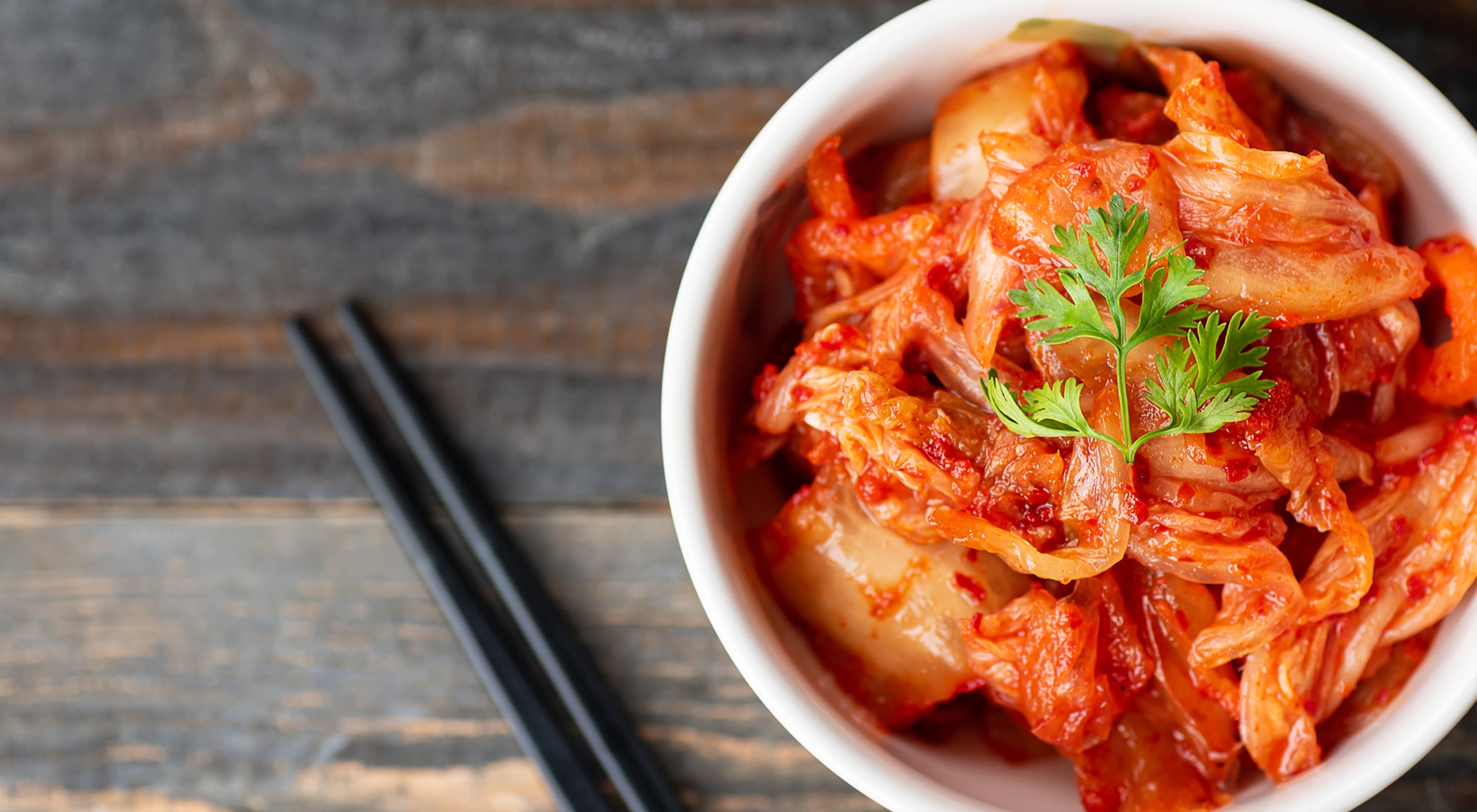
Bioactive substances – the final key component of fascia nutrition
The anti-inflammatory properties of bioactive substances are just one of their many positive characteristics. However, they are not absolutely essential in our diet. If you look at the potential of these substances in more detail, however, you'll see how important they are for a healthy body.
Secondary plant substances
(e.g. β-Carotene, from which our body produces vitamin A) can have many positive effects. These include: antioxidative (protects cells), anti-carcinogen (prevents cancer), regulates blood pressure, boosts immune system, reduces cholesterol, stabilises blood sugar, antithrombotic and antimicrobial.
Fibre
This positively impacts cholesterol levels. It also slows down fluctuations in blood sugar levels and keeps us fuller for longer. The stool volumes shows that food spends less time in our intestinal passage and stimulates digestion as a result. This reduces the risk of degeneration in our digestive tract. Fibre nourishes the intestinal mucosa which is beneficial for our immune system. The happier the intestines, the stronger our body's defence mechanisms. Just 200 g of wholegrain cereals and 125 of pulses cover the recommended daily intake of fibre.
Fermented foods
e.g. tempeh or miso support iron absorption from the diet.

Summary of nutritional recommendations to strengthen connective tissue
- Eat more plant-based, unprocessed foods and reduce consumption of animal products at the same time, avoid glutinous cereal products, avoid monosaccharides, considerably reduce saturated and trans saturated fatty acids (e.g. in the form of butter and heavily processed foods), increase intake of essential, polyunsaturated Omega-3 fatty acids with an optimum ratio to Omega-6 fatty acids, using anti-inflammatory herbs and spices such as cayenne pepper, rosemary and cinnamon and drinking green tea (not at mealtimes) can have an extremely positive effect on the body's tissue quality and condition of fascia tissue, and is therefore recommended.
- Ongoing calorie restriction of 10-30% can also positively effect inflammation in the connective tissue, combat glued fascia and even increase lifespan (proven by studies!) … as if this alone wasn't reason enough for an anti-inflammatory, fascia-friendly diet.
- Regular food intake with a sufficient gap of at least 4 hours between meals, without constant grazing, supports stable blood-sugar levels, which in turn positively reduces inflammatory and damaging behaviour in our fascia.
- Increasing consumption of alkaline metabolised foods can provide an ideal environment for the fascia – namely alkaline to slightly acidic. The viscoelasticity of the fascia, which support connective tissue flexibility on the one hand and resist stress from pushing and pulling on the other, function best in a slightly acidic to alkaline environment. Overacidity in the fascial tissue can be rectified through diet. Fascia subject to an overly acidic environment lose their ability to retain water and become brittle and susceptible to injury.
Here are some examples of alkaline foods that are metabolised: Non-sparkling water, berries, (leafy) vegetables.
Acidic foods to avoid: Sparkling water, heavily processed food and meals rich in carbohydrates, sweetened drinks.
Eating right for the fascia - basic tips
- Try to keep a relaxed mindset when it comes to your diet. You should be able to enjoy the food and drink you consume.
- Ideally, you should focus on healthy, unprocessed foods where possible. Heavily processed foods such as fast food can also increase the risk of depression. There is even a name for this: metabolic-mood syndrome. Of course, there's nothing wrong with a piece of cake every now and then.
- Eat slowly and consciously. Chew your food. Chewing stimulates digestion and releases nutrients.
- Store fruit and vegetables in a dark place. Certain nutrients are sensitive to light and may be lost as a result.
- Avoid storing fruit and vegetables for long periods of time. Their nutrient value decreases the longer they are stored.
Opt for steaming instead of frying, baking or boiling food. Nutrients can be lost in water when boiled. You can retrieve them by reusing the cooking water. However, it’s best to dispose of the cooking water with spinach and chard.
